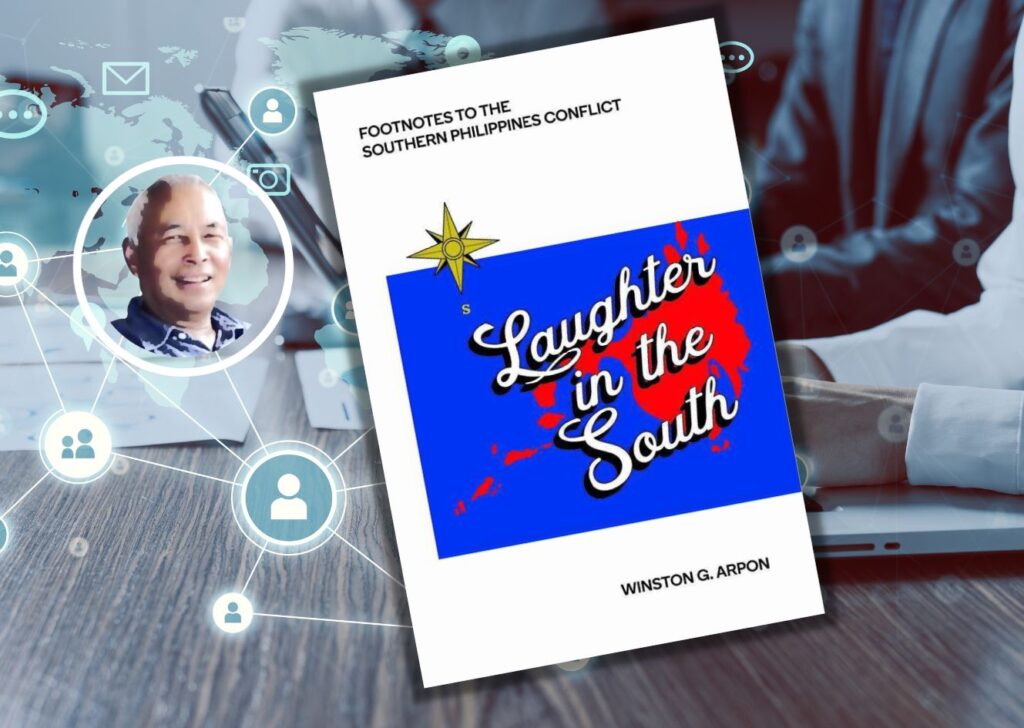PREFACE
In February of 1975, I bade a sad goodbye to Big Bertha, our darling B3700 Burroughs computer at the Philippine Navy Computer Center at Sangley Point in Cavite City. For two years I had been the Center’s executive officer.
I packed a pair of Anchor bags stuffed with all of my worldly possessions: total weight – 1 kilo short of 100. I then headed South to report to Rear Admiral Romulo Espaldon, commander of the Southwest Command in Zamboanga City, and assume my position as Espaldon’s flag secretary. I still hold the position today after almost five years. Even if one secretary I know, a Secretary Romulo, is already a Minister Romulo today.
Within 24 hours upon my arrival in the City of Flowers, my mind was made up: I may not get to Sinumaan or Liguasan Marsh, but I would surely write a book on the conflict in Southern Philippines. I hadn’t forgotten Romulo who once said that a man should: 1) sire a child; 2) plant a tree; and 3) write a book.
It took me 4 years, 4,000 sheets of yellow ruled pad paper, 40 Mongols, 40,000 sticks of Marlboro, 400 meters of typewriter ribbons and 4 drums of Blend 45 (without Ariel Ureta, Pete Roa and Boots Anson-Roa even knowing).
The records of the Southcom Hospital will show that it also took me 401 aspirins and 255 Alka Seltzers, not to mention the number of times I had to report to NP for every bout I had with fits of depression. But to Cybéle, my teenage daughter who has never doubted my potential as an author, I could only show Chapter 1 – unfinished.
Gary Lising didn’t have to tell me it was time to quit. But giving up my book, like giving up a ship, meant going down with it. The thought certainly crossed my mind. I did not, however, seriously consider suicide a fitting gesture for going down with my ship, to the consternation of my friends, Commanders Asterio Bas and Armando Salvo. Tradition-bound as my other friends from Manuk Mangkaw, Bas and Salvo kept pestering me with hints of cowardice and disloyalty to the tradition of the sea.
But I still had my notes on the Southern Philippines conflict and as long as I had them, was a wee feeling of triumph too much to ask?
From the same notes, I saw another book slowly taking shape this time, no longer the scholarly book of my once optimistic self. It was no longer of the Southern Philippines conflict itself and all of its nuances that I had contemplated earlier, but of incidents – the less serious and more amusing the better – that happened to people, especially the men and women in uniform, caught in the conflict. Incidents that are, verily, footnotes to the Southern Philippines conflict.
In crisis, neither the South nor the military in the South was one you could call an island of mirth. Far from it, but there was time for laughter. Yes, there was laughter in the South despite the conflict there. This, hopefully, is not an irony, but a tribute to the many in the South who could still find humor even in the grimmest of situations – they whose unspoken message, ‘I can laugh dying,’ is at once funny, poignant and heroic. The names of some of them appear here. What I would give to have all their names appear here: each and every one of them, military as
well as civilian, who served in the South during the conflict. For this book has been written for them.
I had to perform a delicate balancing act in writing this book. I had to walk the high wire between wanting to present pure, unadulterated humor the Sad Sack way, and, capturing as much as possible, Cornelius Ryan’s way, the significant events, some vignettes, that would give my readers substantive insight of the conflict itself.
Modesty compels me to refrain from gloating over the happy results of my balancing act. Nonetheless, I have coerced one journalist into making a comment. For purely self-serving reasons, I am quoting the comment hereunder.
“This book although composed of anecdotes, can be a very important one because it tells about incidents that give the reader the “feel” of the conflict itself, really much more than that scholarly book could. Compared to military info, both classified and unclassified, on the conflict, an official would more readily read through a book like this and get the feel of it… “


